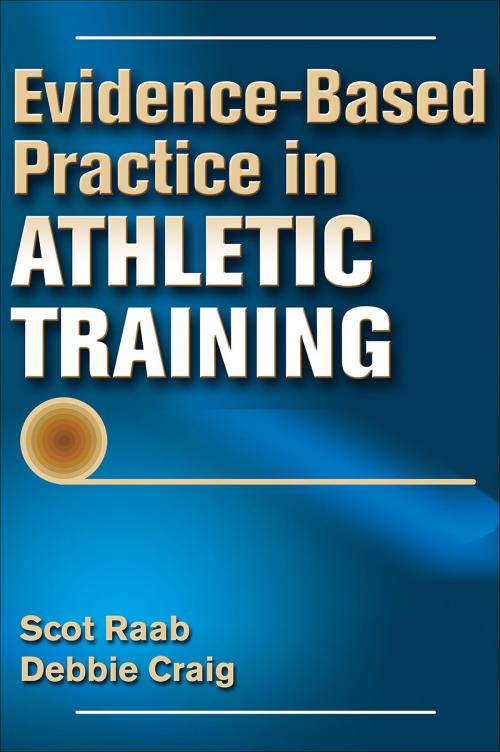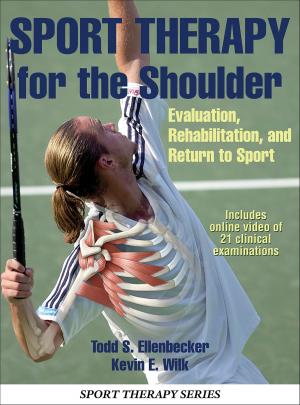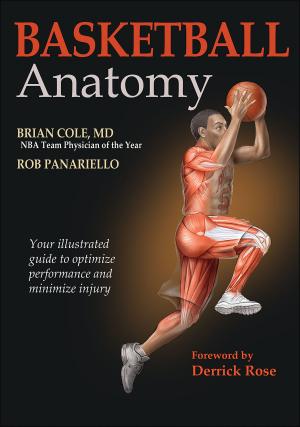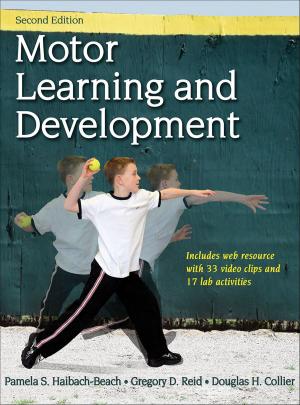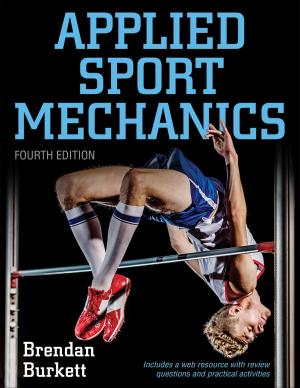Evidence-Based Practice in Athletic Training
Nonfiction, Health & Well Being, Medical, Specialties, Sports Medicine, Physical Medicine & Rehabilitation| Author: | Scot Raab, Deborah I. Craig | ISBN: | 9781492584933 |
| Publisher: | Human Kinetics, Inc. | Publication: | November 17, 2015 |
| Imprint: | Human Kinetics, Inc. | Language: | English |
| Author: | Scot Raab, Deborah I. Craig |
| ISBN: | 9781492584933 |
| Publisher: | Human Kinetics, Inc. |
| Publication: | November 17, 2015 |
| Imprint: | Human Kinetics, Inc. |
| Language: | English |
As one of the first texts of its kind, Evidence-Based Practice in Athletic Training contains essential information on the fundamentals of evidence-based practice (EBP) for students who are working toward certification in athletic training and athletic trainers who wish to stay up to date on best practices in the field. With EBP, all clinical decisions are based on available research studies, and these studies are selected and assessed according to specific criteria that yield evidence of benefit. EBP is a continuing education requirement for athletic trainers who are certified with the Board of Certification (BOC).
Grounded in solid science, Evidence-Based Practice in Athletic Training explains the basics of EBP and the research design methods that are so vital to its implementation. Starting in part I, the text introduces the various levels of evidence, well-built question development using the PICO technique (patient problem or population, intervention, comparison, and outcomes), the five steps of searching for evidence, and search techniques. Part II guides readers through researching specific questions and evaluating research studies, including how to incorporate the evidence they find into their clinical practice. Part III reviews the various research types, their uses and benefits, and research ethics as a critical part of the process of EBP. Through these step-by-step chapters, readers will be able to formulate clinical questions, perform research on current studies, analyze the available data, and apply the principles in their practice in order to provide the best and most accurate care possible.
In addition to in-depth information on the principles and application of EBP, Evidence-Based Practice in Athletic Training presents clinically based scenarios that allow students to apply their recently acquired knowledge to real-life situations, thus encouraging a deeper understanding of the topics presented throughout the text. These scenarios allow those who are learning EBP concepts for the first time to understand how EBP is incorporated clinically.
The most efficient, systematic, and thorough resource of its kind, Evidence-Based Practice in Athletic Training encourages students and current certified athletic trainers to ask meaningful questions, gain the knowledge they need for excelling in future practice, and rise to the top of their profession. For students who want a thorough skill base in EBP and for credentialed health care professionals who seek further knowledge in the area, Evidence-Based Practice in Athletic Training will help all current and future athletic trainers provide the best care for their athletes and clients.
As one of the first texts of its kind, Evidence-Based Practice in Athletic Training contains essential information on the fundamentals of evidence-based practice (EBP) for students who are working toward certification in athletic training and athletic trainers who wish to stay up to date on best practices in the field. With EBP, all clinical decisions are based on available research studies, and these studies are selected and assessed according to specific criteria that yield evidence of benefit. EBP is a continuing education requirement for athletic trainers who are certified with the Board of Certification (BOC).
Grounded in solid science, Evidence-Based Practice in Athletic Training explains the basics of EBP and the research design methods that are so vital to its implementation. Starting in part I, the text introduces the various levels of evidence, well-built question development using the PICO technique (patient problem or population, intervention, comparison, and outcomes), the five steps of searching for evidence, and search techniques. Part II guides readers through researching specific questions and evaluating research studies, including how to incorporate the evidence they find into their clinical practice. Part III reviews the various research types, their uses and benefits, and research ethics as a critical part of the process of EBP. Through these step-by-step chapters, readers will be able to formulate clinical questions, perform research on current studies, analyze the available data, and apply the principles in their practice in order to provide the best and most accurate care possible.
In addition to in-depth information on the principles and application of EBP, Evidence-Based Practice in Athletic Training presents clinically based scenarios that allow students to apply their recently acquired knowledge to real-life situations, thus encouraging a deeper understanding of the topics presented throughout the text. These scenarios allow those who are learning EBP concepts for the first time to understand how EBP is incorporated clinically.
The most efficient, systematic, and thorough resource of its kind, Evidence-Based Practice in Athletic Training encourages students and current certified athletic trainers to ask meaningful questions, gain the knowledge they need for excelling in future practice, and rise to the top of their profession. For students who want a thorough skill base in EBP and for credentialed health care professionals who seek further knowledge in the area, Evidence-Based Practice in Athletic Training will help all current and future athletic trainers provide the best care for their athletes and clients.
